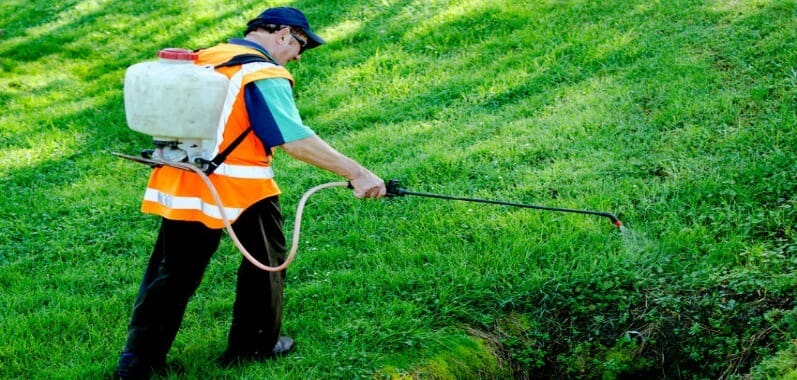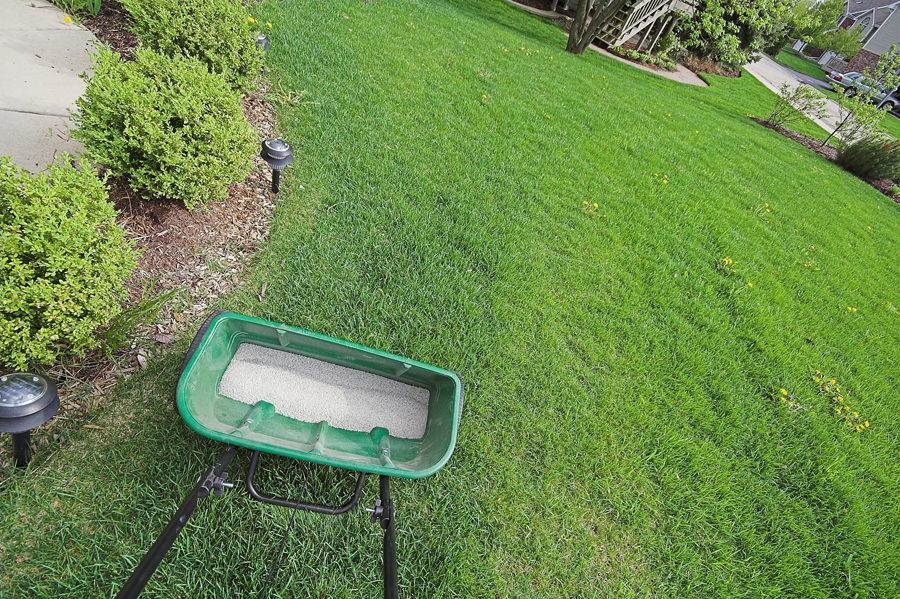
 A wise man once told me “To carry on good business, don’t create more work for yourself or your customers, than necessary”, and I’ve carried that with me throughout my life. The same can be said for your lawn when it comes to fertilization.
A wise man once told me “To carry on good business, don’t create more work for yourself or your customers, than necessary”, and I’ve carried that with me throughout my life. The same can be said for your lawn when it comes to fertilization.
Just about every lawn care program is going to provide at least 2 spring fertilizations. The first one is usually done early when the crabgrass preventer is applied and then the second one is usually 6-10 weeks later and often labeled a “weed and feed”. Now you know as well as I do, that by the time the second one is being put on, the grass is usually growing pretty fast and a fertilizer is going to make it grow even faster. Even Kansas State and the University of Missouri have information that advise against early feedings. So why do we do them? Well….for starters, we like mowing our lawns every 5 days, right? By now you have realized that I’m kidding and hopefully you’re still with me.
The main reason to have a fertilizer with crabgrass preventer is that the chemical that prevents crabgrass is much easier to apply when it is attached to a fertilizer pellet or granule. The same can be said in the case of the “Weed and Feed” too. Please check out the post about why Liquid Weed Killers are better than Granular Weed Killers.
 With all of that being said, there are 2 ways to maintain optimal lawn performance and not over fertilize your lawn in the spring.
With all of that being said, there are 2 ways to maintain optimal lawn performance and not over fertilize your lawn in the spring.
The second way is to make sure that the fertilizer that you are applying contains “slow-release nitrogen”. This insures that whatever nitrogen that’s in the bag isn’t going to breakdown as quickly. This provides a “longer” and “slower” feeding, meaning the grass isn’t going to grow exceptionally fast due to the fertilizer. The blog post called Top 5 things to remember when choosing a bag of fertilizer for your lawn further explains the differences between fast and slow release nitrogen. Many lawn care companies often use these same principles when it comes to their services. If you’re uncertain, ask them what they use. After all, you are the one that has to mow or pay someone to mow your lawn.The first way is to make sure these early treatments have a lower amount of nitrogen. If you’ve read the blog post called Fertilizer numbers, what do they mean? you’ll know that nitrogen is the nutrient that makes the grass grow. If the fertilizer that you put on has a lower amount of nitrogen, then you know that you’re lawn is getting some nutrients, but not so much that you’ll be forced to mow twice a week.
There you have it! If you ever have any questions or decide you’d like to have a professional take care of it for you, don’t hesitate to call! (816) 648-1956!
